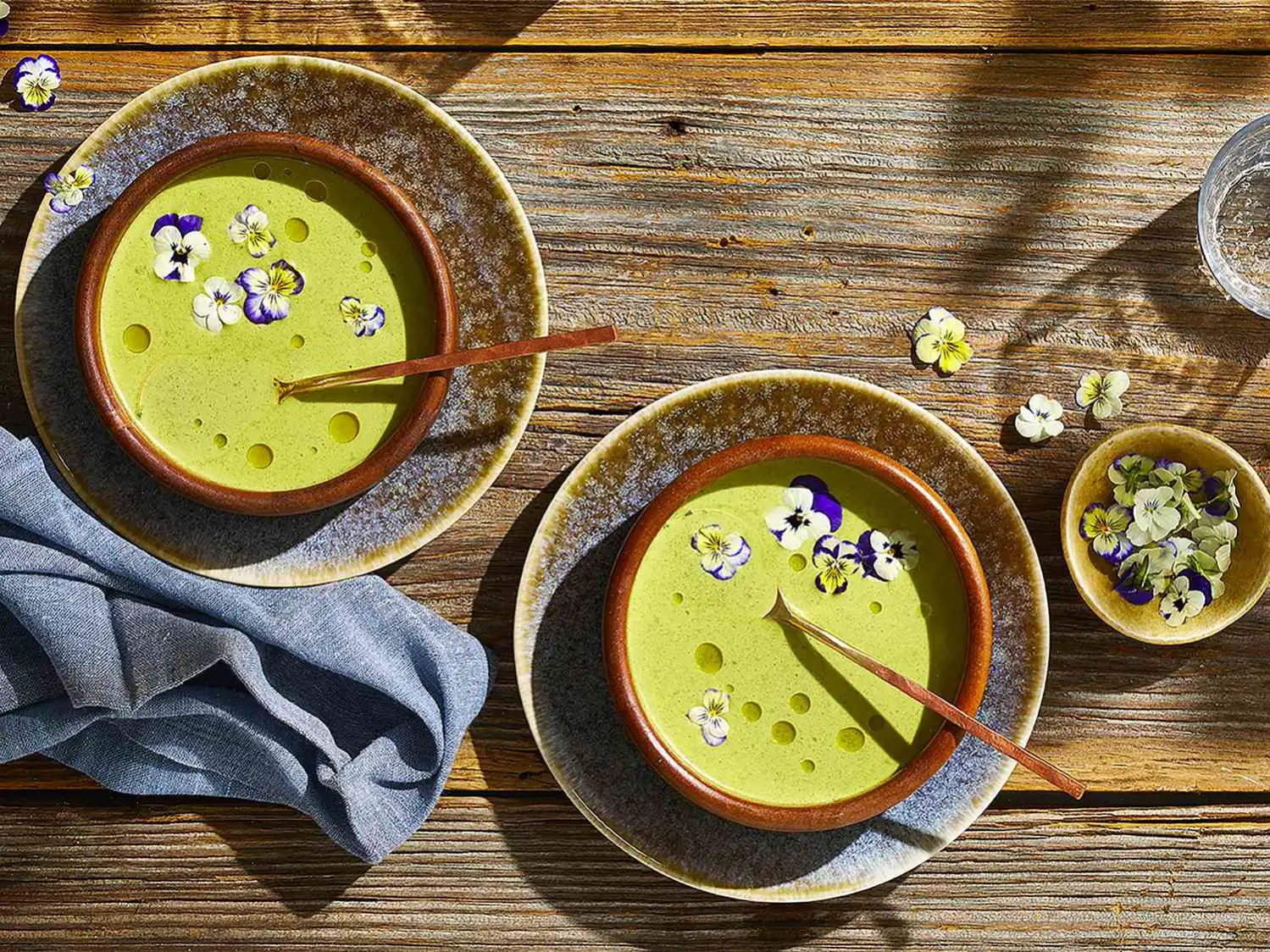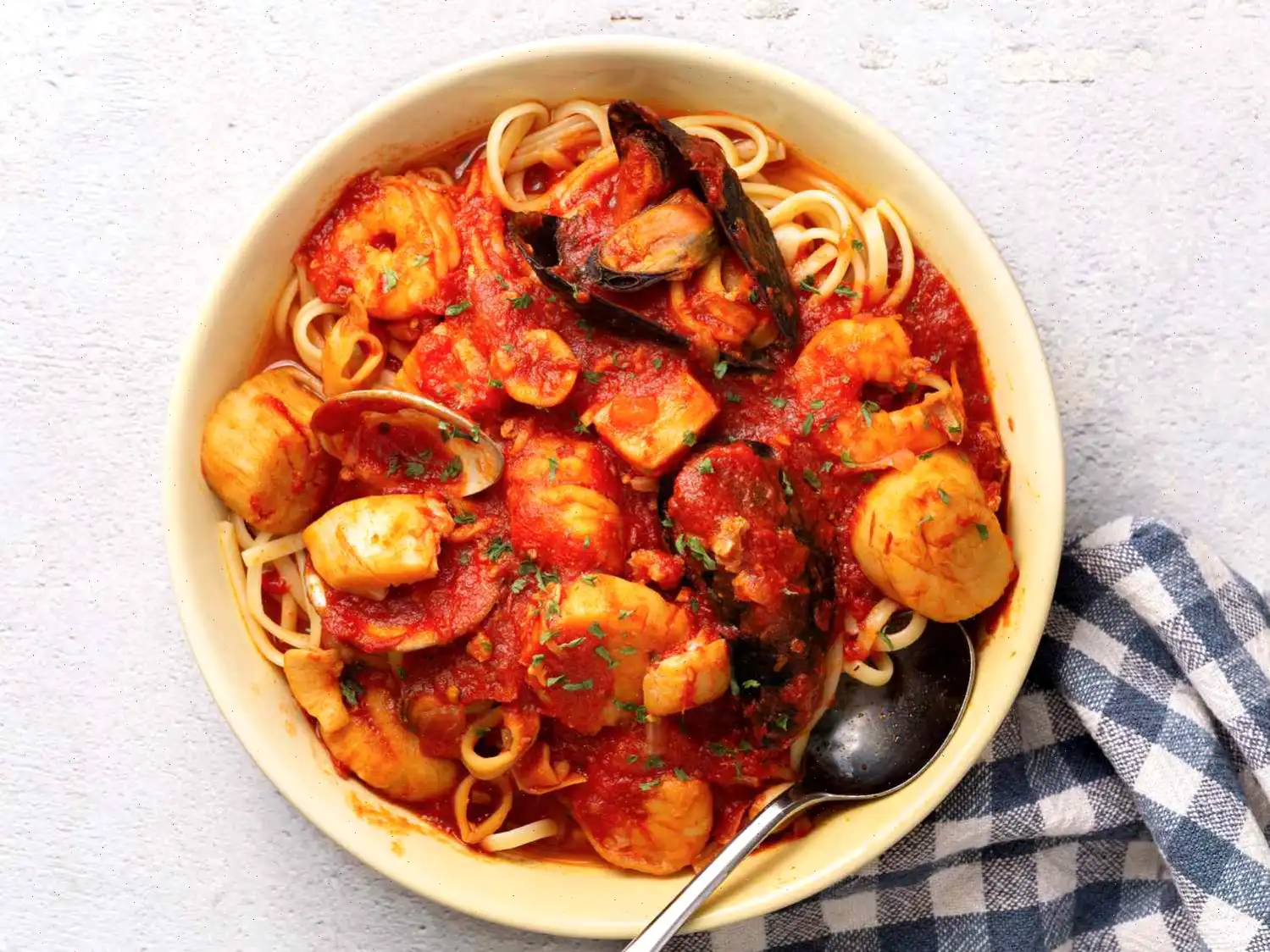
Backyard Soup Recipe
Ingredients
This recipe was developed at its original yield. Ingredient amounts are automatically adjusted, but cooking times and steps remain unchanged. Note that not all recipes scale perfectly.
- 6 tablespoons extra-virgin olive oil, divided, plus more for garnish
- 6 cups leafy greens, such as baby spinach and watercress
- 1 1/2 cups violet greens (about 1 ounce)
- 2 cups vegetable broth
- 1/4 tsp kosher salt
- 1/2 cup vegan heavy cream
- 3 tablespoons finely chopped chives
- Edible flowers, for garnish
Directions
- Heat 2 tablespoons of olive oil in a saucepan over medium heat.
- Add leafy greens and violet greens to the pan. Cook and stir until the greens are wilted, about 2 minutes.
- Pour in the vegetable broth and add the kosher salt. Bring the mixture to a simmer over medium-high heat, then remove from heat.
- Blend the mixture using a high-powered blender or immersion blender until smooth, about 30 seconds.
- Add the vegan heavy cream and chopped chives to the blender. Blend again until smooth, about 5 seconds more.
- With the blender motor running on low, drizzle in the remaining 4 tablespoons of olive oil.
- Serve the soup hot, drizzled with additional olive oil and garnished with edible flowers.
Cook's Note:
If you prefer, instead of chives, you can use 3 tablespoons of field garlic greens. Saut them in hot olive oil for 1 minute before adding the leafy greens.
Nutrition Facts (per serving)
| Calories | 323 |
|---|---|
| Total Fat | 32g (41%) |
| Saturated Fat | 10g (49%) |
| Cholesterol | 34mg (11%) |
| Sodium | 437mg (19%) |
| Total Carbohydrates | 8g (3%) |
| Dietary Fiber | 4g (16%) |
| Total Sugars | 3g |
| Protein | 4g (8%) |
| Vitamin C | 17mg (19%) |
| Calcium | 149mg (11%) |
| Iron | 2mg (10%) |
| Potassium | 312mg (7%) |
* Percent Daily Values are based on a 2,000 calorie diet. Your daily values may be higher or lower depending on your calorie needs.
** Nutrient information is not available for all ingredients. Amount is based on available nutrient data.
(-) Information is not currently available for this nutrient. If you are following a medically restrictive diet, please consult your doctor or registered dietitian before preparing this recipe for personal consumption.

Origin and History
The Backyard Soup is a modern twist on the concept of foraged foods, blending wild greens with simple kitchen ingredients to create a fresh, healthy, and nourishing meal. While the exact origins of the dish are not well-documented, it can be seen as part of a growing movement toward sustainable eating. People have long foraged wild plants in their backyards or nearby forests, and the idea of using local greens and herbs is deeply rooted in traditional culinary practices across various cultures. This soup is a contemporary homage to this practice, encouraging the use of whats readily available in nature to create something delicious and wholesome.
Regional Features
Backyard Soup is especially popular in regions where wild, edible greens are abundant and accessible. In the United States, this dish might be especially appreciated in rural or suburban areas where people can easily find ingredients like wild spinach, plantain leaves, or watercress. The soup can be modified based on whats available in the region, with different greens and herbs used according to the local climate and flora. For example, in Mediterranean areas, you might find variations that use wild herbs like thyme or oregano, while in colder climates, heartier greens like kale and dandelion might take center stage.
How It Differs from Similar Dishes
While there are many vegetable soups that feature greens as a central ingredient, Backyard Soup stands out due to its unique combination of foraged wild greens and its simplicity. Unlike many traditional soups that focus on root vegetables or starchy ingredients, this soup showcases the freshness and vibrancy of leafy greens. Additionally, its use of vegan heavy cream and olive oil gives it a creamy yet plant-based richness, making it a great option for those following vegan or dairy-free diets. The garnishing with edible flowers adds an artistic and visual touch, elevating this humble soup into a more refined dish.
Where Is It Typically Served?
Backyard Soup is perfect for casual outdoor gatherings or as a light dinner at home. It is often served in cozy, nature-inspired settings, such as garden picnics or al fresco dining. The soups natural, earthy flavors make it a popular choice for farm-to-table restaurants that emphasize locally sourced ingredients. It can also be enjoyed as part of a larger, seasonal meal, particularly during the spring and summer months when wild greens are at their peak. Whether served as a starter or a main dish, its a comforting and refreshing choice for any occasion.
Interesting Facts
- The soups use of wild greens like violet leaves and plantain not only makes it incredibly nutritious but also introduces a rich array of flavorsearthy, slightly sweet, and mildly tangy.
- While the recipe calls for vegan heavy cream, you can substitute it with regular cream or coconut milk if preferred. This flexibility makes it adaptable to different dietary needs.
- The garnishing of edible flowers not only adds a pop of color but also enhances the overall presentation. Common choices include nasturtiums, pansies, or even violets, all of which can often be found in backyards during the right season.
- The soup is a celebration of sustainabilityby foraging locally and using whats growing naturally, you minimize waste and reduce the carbon footprint associated with sourcing ingredients from far-flung locations.
You can listen to this recipe in AI audio format. Simply click the play button below to listen to the content in a format that suits you best. It’s a great way to absorb information on the go!








